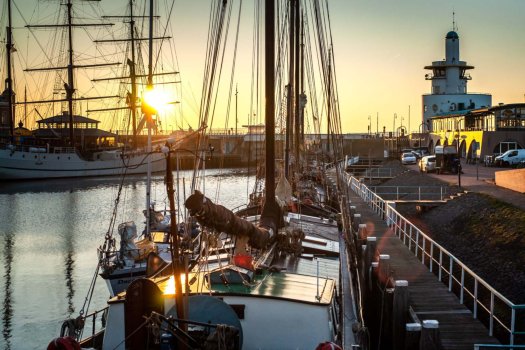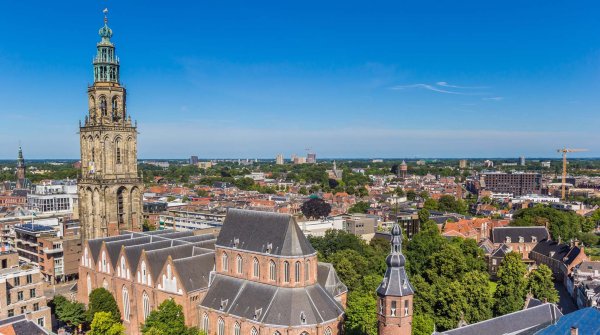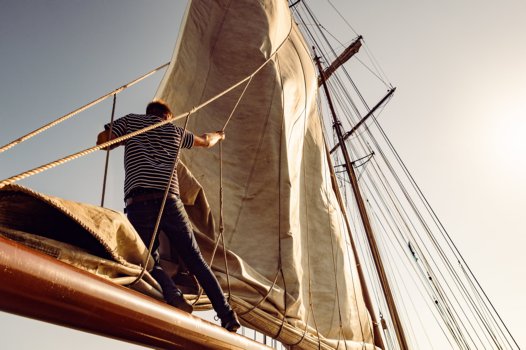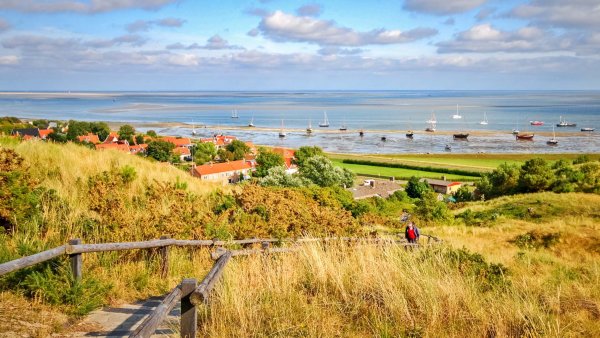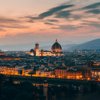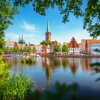ALL ABOUT THE WAD
Ultimate relaxation on the Dutch and German Wadden Islands
The Wadden will be the place to be this summer. Cycling, hiking, seeking peace and space, spotting birds and seals, discovering culinary surprises, and above all experiencing breathtaking nature. Both on the Dutch and German Wadden Islands, there’s plenty to do and see. Six examples of the ultimate relaxing and active holidays.
“Which sailor is lying in Nanni's bed?”
Pardon? You jump up from your beach chair and prick up your ears. Did I hear that right? You filter out the sounds of screeching seagulls and laughing children and catch the conversation. “I’ll ask again: which sailor is lying in Nanni's bed?” Ah, Nanni, of course. But the conversation has nothing to do with a sailor and a loose German woman. It turns out the question is a mnemonic used by sailors to remember the names of the German Wadden Islands. From east to west, the sentence refers to the islands Wangerooge, Spiekeroog, Langeoog, Baltrum, Norderney, Juist, and Borkum.
Wading just above your ankles in the sea
Langeoog, Norderney, and Borkum form the German trio that joins the Dutch Wadden Islands, which EigenWijze Reizen offers as cycling and hiking destinations. From the mainland, you make a transfer to one of these three islands to take a lovely loop around the island, then settle into a beach chair and completely surrender to the slow pace of life. The colorful wicker chairs, complete with footrests, are also found as distinctive furniture in the village restaurants. They remind you of a time when bathers only ventured into the sea up to their ankles. And cycling for fun was totally taboo back then. Oh my, what a time it was. And hooray, what a time it is now!
Garden fences made of whale bones
Six days of cycling in the northernmost part of Germany means visiting an island each time. It starts in the harbor town of Emden. At the old inner harbor, you pass the statue of Jantje Vis, symbolizing the city’s old fishing heritage. Then the first island comes into view: Borkum. In addition to the natural beauty, you’ll explore the historic streets of the village. Garden fences made from whale bones reveal the heroic past. Until the 19th century, the islanders earned their living through whaling. When tourism began, they concluded that this was a much safer way to make a living.
Variety at every turn
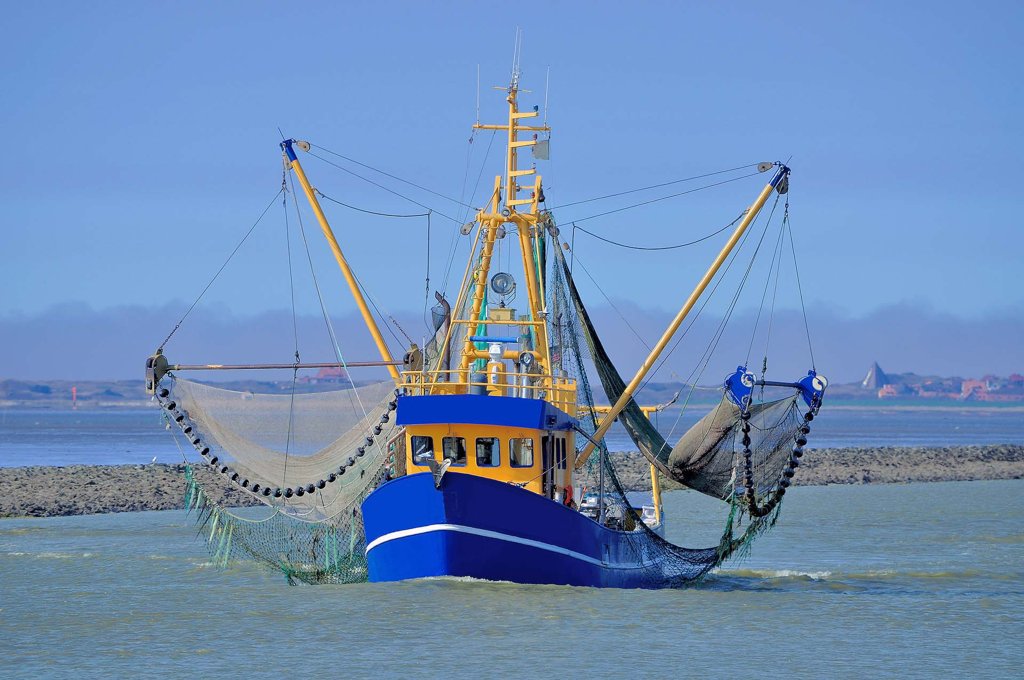
Via Greetsiel and Norden on the mainland, a second island appears. It’s the contrast between island and mainland that makes this journey even more enjoyable; first through a quiet dune landscape, then through a forest or rural surroundings with historic towns and impressive castles. So, "all about the Wadden." And on top of that, you cycle past the most tilted tower in the world. The church tower in Suurhusen is even more tilted than the one in Pisa. With its lean of 2.47 meters, it has been in the Guinness World Records since 2007.
Hip and hot Vliebiza
Although all the Wadden Islands are similar, the Dutch and German versions do show some differences. The Dutch islands are generally a little larger. And some seem to embrace modern trends a bit more. Take Vlieland. Thanks to the Dorpsstraat (the main street) of Oost-Vlieland, the island is often playfully referred to as "Vliebiza," a combination of Vlieland and Ibiza. On either side, you'll find trendy restaurants with names like "Puur" and "Gestrand," mixed with lifestyle shops and cute little boutiques offering colorful hippie accessories, beachwear, and Havaianas. You can stroll around and stop by the Leut coffee bar (Dorpsstraat 118) to treat yourself to a delicious cranberry cheesecake. By the way, Vlieland (and also Terschelling) is a perfect island for walking. With lots of fresh air, beautiful hiking trails through forests, dune valleys, and salt marshes, and about a hundred bird species to spot. Plus, the island is only 12 km long and a maximum of 2 km wide, so you can easily explore every corner.
Visiting four islands
During the 9-day cycling holiday (tour) of the Wadden Islands, you will visit not only Vlieland and Terschelling but also Ameland and Schiermonnikoog. This quartet is reached by ferry from Harlingen, Holwerd, and Lauwersoog. Along the way, you'll also explore the mainland of Friesland and Groningen, with visits to Leeuwarden and Dokkum. But first, it’s off to Ameland. Behind the dike, the flat polder landscape stretches out, with the silhouettes of the four villages—Ballum, Hollum, Buren, and Nes—in the distance. Ballum offers you an old, unique, and very small cemetery. In the mortuary, you'll find the graves of the Cammingha family, who held power here for a long time. Since 1429, Ameland was their property.

